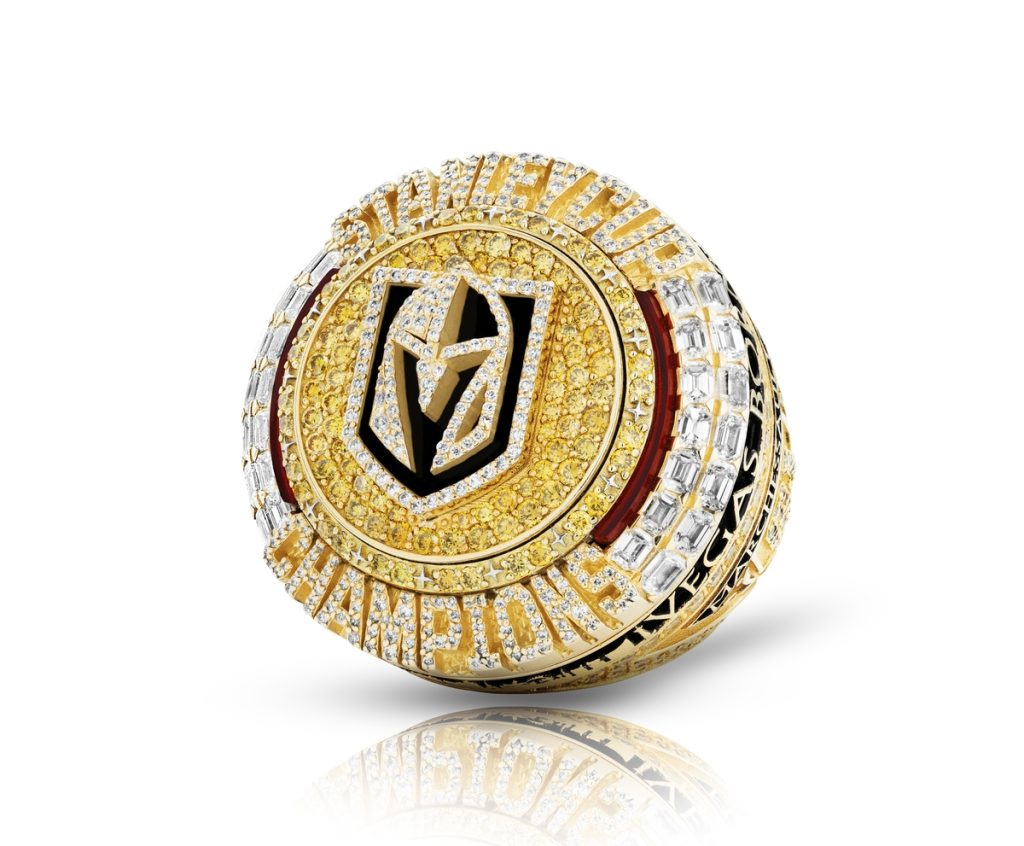Thursday, June 19, 2025 | 2 a.m.
Editor’s note: “Behind the News” is the product of Sun staff assisted by the Sun’s AI lab, which includes a variety of tools such as Anthropic’s Claude, Perplexity AI, Google Gemini and ChatGPT.
The Florida Panthers won their second consecutive Stanley Cup championship this week, and the NBA title winner will be determined by the end of this weekend. Each member of the team will receive a championship ring. Sports rings have become over-the-top in recent years, with franchises attempting to have more gaudy designs.
This modern extravagance represents a dramatic evolution from humble beginnings. The tradition of awarding championship rings in sports dates to the late 19th century, beginning with the Montreal Hockey Club of the Montreal Amateur Athletic Association. After winning the inaugural Stanley Cup in 1893, the club ordered rings for its players — marking the first known instance of championship rings in professional sports[1]. These early rings were simple, resembling wedding bands and featuring two crossed hockey sticks, a puck and the club’s initials. Inside, they were engraved with the player’s name, the word “Champions,” the date and the jeweler’s hallmark.
While trophies were the main symbols of victory in early sports history, the idea of a ring as a personal memento gained traction across different leagues. Major League Baseball’s New York Giants awarded the first World Series rings to players after their 1922 championship, before which players often received other keepsakes such as pins, pocket watches or cufflinks[2].
Growth in popularity
By the 1930s, championship rings became an annual custom in baseball. The NBA started the tradition in 1947, and by the 1960s, rings became standard practice in the NHL and a major status symbol across all major leagues[3]. The tradition extended beyond professional sports to collegiate and even high school levels in North America.
Since the 1980s, rings have become increasingly elaborate, with franchises competing for the most eye-catching and valuable designs. What began as simple bands has evolved into extravagant, highly personalized symbols of victory and legacy[4].
Customization process
Players, coaches and team owners are often involved in the design process. For example, the Toronto Raptors’ 2019 ring was heavily influenced by player Kyle Lowry’s vision for a flashy, unique piece[6].
Materials and construction
Modern championship rings typically feature:
Precious metals: 14K or 18K white or yellow gold bands, with some using platinum[7].
Gemstones: Hundreds of natural diamonds, often SI quality or better. Elite rings can include over 800 stones and weigh more than 15 carats. Colored gemstones such as sapphires, rubies and emeralds are used for team logos and highlights[8].
Special features: Custom stones, glass enamel for intricate details, and unique elements like removable components or hidden engravings[9].
Las Vegas Aces center A’ja Wilson (22) shows off her championship ring during a ceremony before an WNBA basketball game against the Phoenix Mercury at Michelob Ultra Arena in Mandalay Bay Tuesday, May 14, 2024.
Photo by:
Steve Marcus
Symbolism and personalization
Championship rings incorporate multiple symbolic elements:
Team logos and colors
Championship year and final scores
References to the season’s journey
Player’s name and number
Team slogans or mottos
Custom inside-band engravings such as playoff records or inspirational phrases[10]
Notable examples include the 2023 Vegas Golden Knights ring with 67 diamonds representing each win, and the 2022 Colorado Avalanche ring featuring the phrase “find a way” and playoff series records inside the band[11].
Key cost factors
Several elements influence manufacturing costs:
Materials: Higher karat gold, platinum and premium diamonds significantly increase costs. The number, size, quality and type of gemstones are major cost drivers[13].
Design complexity: Intricate designs, custom logos, detailed engravings and unique features like removable components require more skilled labor and time[14].
Production volume: Smaller production runs are more expensive per ring than larger orders due to economies of scale[15].
Manufacturer reputation: Established manufacturers with reputations for high-quality craftsmanship may charge premium rates[16].
Funding
In the NBA, the league covers the cost of the rings. In the NHL, individual franchises pay for them[17].
Second-hand market value
Championship rings have become highly valuable collectibles, with prices varying dramatically based on several factors:
Record-breaking sales
Kobe Bryant’s 2000 Lakers ring: Sold for $927,000 in 2024, setting a record for NBA rings[18]
Bill Russell’s 1957 Celtics ring: Sold for $705,000 in 2021[19]
LeBron James’ 2016 Cavaliers ring: Estimated worth $200,000-$300,000 at auction[20]
Typical market values
Rings from iconic players or historic teams: $100,000+
Rings from less prominent players or staff: $10,000-$50,000
Licensed replicas for fans: $100-$500[21]
Rings with strong provenance, authentication and connection to legendary athletes or milestone championships command the highest prices.
Vegas Golden Knights 2023 championship ring
The Golden Knights’ 2023 Stanley Cup ring, designed by Jason of Beverly Hills, exemplifies modern championship ring craftsmanship and symbolism.
Design features
Total diamonds: Approximately 12 carats of natural white and yellow diamonds
Unique element: Detachable top that can be worn as a pendant, inscribed “It’s Knight Time”
Hidden feature: Removing the top reveals a detailed replica of T-Mobile Arena with center ice logo[22]
Symbolic elements
67 white diamonds in the Knights’ primary logo represent total wins (regular season and playoffs)
32 diamonds on inner bezel represent each NHL team
0.54 carats of diamonds on Stanley Cup motif honor franchise’s 54 all-time playoff victories
Six stones around the diamond Stanley Cup mark the team’s six seasons since joining the NHL
Sixteen stars on the ring’s face represent playoff victories required to win the Stanley Cup[23]
Special tributes
The diamonds surrounding the Stanley Cup are arranged in a star shape, referencing the “Vegas Strong” banner and honoring victims of the 2017 Route 91 Harvest music festival tragedy. Small stars on the replica rink mark locations of each goal scored in the Cup-clinching Game 5[24].
Commercial availability
The Golden Knights produced 50 rings for public sale, nearly identical to players’ rings, priced at $75,000 each[25].


